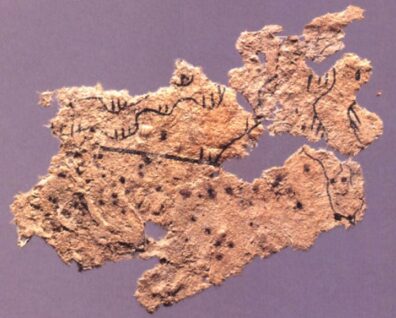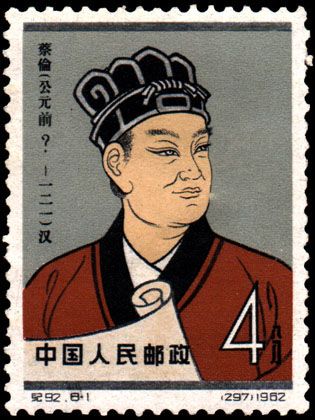Dear Sofia,
Every week my column gets printed on paper. Sometimes I use paper to dry my paws. Or clean up after I use the litterbox.
I asked my friend Xiuyu Wang who invented paper—and why. He studies Chinese history at Washington State University.
He told me that paper as we know it was invented in ancient China. Paper made it easier to wrap things up and write things down.
“Papermaking is one of the most significant inventions because paper does so many things,” Wang said. “People kept refining it and making different kinds of paper.”
The earliest paper fragments we have are from the 2nd century BCE. They include bits of map and paper used to wrap expensive objects.

This is the oldest known piece of paper. It was found by archaeologists at a burial site in China in 1986. It dates to the 2nd century BCE. That’s between 200 BCE and 100 BCE. (The years count down to 1 BCE then start counting up at 1 CE until we get to the year we’re in now.)
Before that, people all over the world used different things in place of paper. They wrote on animal bones, clay tablets or metal plates. They scribbled on strips of bamboo or bark. They even used silk fabric or sheets of animal skin.
But those materials were bulky or expensive. Imagine carrying around a book inscribed on bones or metal plates. A bundle of silk would be easy to move, but it cost lots of money.
Paper solved those problems. It’s light and foldable. It’s less expensive to produce. To make a little silk, people must raise thousands of silk-making moths. They grow tons of mulberry trees to feed them. Then they spin that silk into fabric.
Papermakers used bits of plant material like hemp and bamboo. They mashed it up with water to make a paste. Then they spread it on a mold and let it dry. It was skilled work—but not like spinning silk.
Wang told me paper really took off because of what was happening in China at that time.
“One of the biggest reasons papermaking was popularized was the government’s need for writing,” Wang said. “They badly needed something cheaper, lighter and more portable.”
It was the Han Dynasty, which is also called the golden age of Chinese history—because so many important things happened then.
Running a prosperous empire means keeping lots of records.

This stamp shows the court official who presented papermaking to the emperor. His name is Cai Lun. His improvements made papermaking practical. He added old rags and fishnets to the bark and hemp mush to make the paper cheaper and sturdier.
This was also the time when the Buddhist religion came to China. They needed a good way to copy a bunch of religious texts.
Once papermaking took off, people used the new tech for all kinds of things. They shared it with people all over the world. There’s even evidence people used it for toilet paper back then.
History is real people solving real problems. Like running a government, shipping and storing valuable objects and managing personal hygiene.
After that, paper was really on a roll.
Sincerely,
Dr. Universe